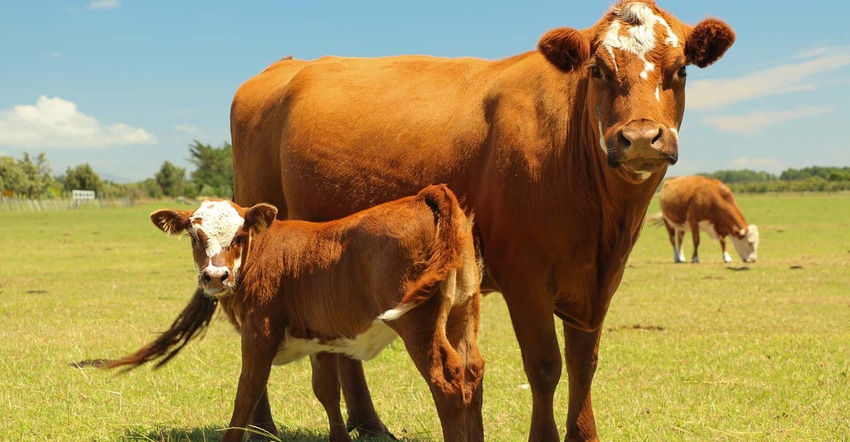February 14, 2017

Give extra attention to first-calf heifer pairs during calving to be sure they remain healthy and are ready to breed back.
It is estimated that 10% to 15% of first-calf heifers experience calving difficulties.
"If nothing is done to help her get back on track after calving, this could negatively affect the postpartum interval and next season pregnancy rates," said Taylor Grussing, SDSU Extension Cow/Calf Field Specialist. "Remember these heifers are the cattle operation's newest assets. It's important to keep them healthy through their first calving in order to give them the best chance of breeding back and entering into the mature cow herd."
Grussing outlines some factors cattle producers should consider when caring for first-calf heifers.
First in line
If the first-calf heifers are the first to calve, it makes for a more efficient breeding season," Grussing said. "Breeding programs set up this way have advantages over calving all cows at once."
She explains that calving the heifers first allows producers to prioritize the first-calf heifers, who tend to need more frequent checks to avoid calving difficulties as well as more attention than a mature cow once their calf is born.
Calving them first also gives the heifers before the herd's mature cows also gives them more time to recover from pregnancy and calving, and resume fertile estrous cycles, before breeding season.
"Traditionally, we need to rebreed cows within 80 days postpartum in order to maintain a 365 day calving interval. Breeding heifers to calve before mature cows allows them closer to 100 days to resume estrous cycles," Grussing explained. "This sets them up for better chances of rebreeding with their second calf early in the next breeding season."
Recordkeeping
Keeping track of records before, during and after calving is important. "This allows cattle producers to compare the first-calf heifer's performance throughout the year," Grussing said.
Make note to evaluate pre and post calving health, calving performance, and nutrition.
"Using these records throughout the year can also be helpful in making sure she is going down the right path to successfully join the cowherd," she said.
When keeping records, Grussing outlines a few items to consider:
Calving difficulty: How did she perform through her first calving? Did she have any difficulty?
If first-calf heifers do experience dystocia, a calving ease score from 1 to 5 (American Hereford Association) can be documented in the calving book. Heifers showing more signs of calving difficulty (scores 3 to 5) may need to be culled or flagged for extra attention next calving season.
Nutrition: Give her a body condition score (BCS). First-calf heifers need to be at a BCS of 6 by calving and 85 percent of mature body weight which will set her up with adequate nutrients for her continued growth, while also allowing her to meet needs of lactation and resumption of estrous cycles prior to breeding.
Is she too fat? Heifers with BCS greater than 6 may have impaired milk production and increased incidence of dystocia, due to extra fat deposition in the udder and around the pelvis, respectively.
Is she too thin? If heifers are too thin, extra energy will need to be supplemented in order for her to meet nutrient demands for lactation, growth and maintenance. Thin heifers will likely have a longer postpartum interval and may lead to devastating profit losses if they get culled due to late or failure to breed back within the desired calving interval.
A few more tips for successful calving season
Reduce contaminants: Clean pens frequently or utilize the Sandhills Calving System to maintain a clean environment in and out of the barn.
Post-Calving: Monitor first-calf heifers for proper cleaning and passing of the placenta within 12 hours post-calving. Retained placentas, uterine prolapses, uterine infections or lacerations may cause her discomfort and can also lead to breeding problems down the road.
Source: SDSU Extension
You May Also Like




